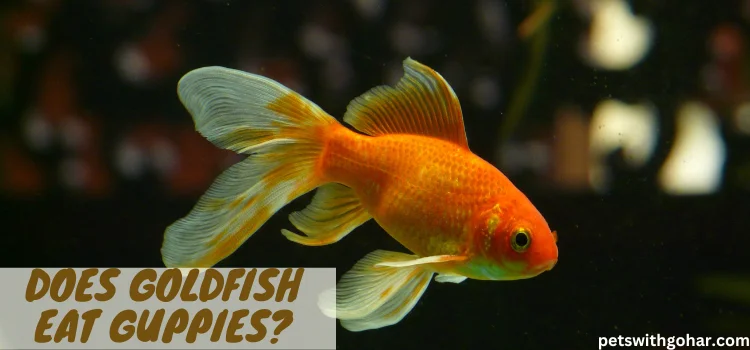Aquarium enthusiasts often wonder whether goldfish can peacefully coexist with guppies in the same tank.
Both guppies and goldfish are popular choices for freshwater aquariums, each having its unique characteristics and requirements.
In this article, we will delve into the compatibility between these two species and explore the factors that determine whether they can live happily together.
The World of Guppies and Goldfish
What Are Guppies?
Guppies (Poecilia reticulata) are small, colorful, and active freshwater fish native to South America.
They are widely known for their vibrant hues and distinctive tail shapes, making them a popular choice for aquarium hobbyists.
Due to their peaceful nature and ease of care, they have become a favorite for both beginners and experienced fishkeepers.
What Are Goldfish?
Goldfish (Carassius auratus) are another common freshwater fish, originally hailing from East Asia.
They come in various shapes, sizes, and colors, thanks to selective breeding over the centuries. Goldfish are egg-layers, and their eggs attach to aquatic plants or objects until they hatch.
They are known for their intelligence, sociability, and distinct personalities, which endear them to many aquarium enthusiasts.
Guppies and Goldfish: A Comparison
Size and Lifespan
One of the fundamental differences between guppies and goldfish lies in their size and lifespan.
Guppies are relatively small fish, usually growing up to 1.5 to 2.5 inches in length.
On the other hand, goldfish have the potential to grow much larger, with some species reaching up to 12 inches or more.
Additionally, guppies have a shorter lifespan of around 2 to 3 years, while goldfish can live for several years, sometimes even decades, with proper care.
Reproduction Methods
As mentioned earlier, guppies and goldfish have distinct methods of reproduction. Guppies give birth to live fry after a gestation period of approximately 3 to 4 weeks.
A female guppy can produce multiple batches of fry from a single mating. In contrast, goldfish laying eggs that need to be fertilized externally by a male goldfish.
The eggs then develop on their own, and the fry hatch after a few days.
Temperament and Behavior
Guppies are known for their peaceful and non-aggressive nature, making them excellent community fish.
They are generally social and enjoy swimming in schools, providing a visually stunning display in the aquarium.
On the other hand, goldfish can display varying degrees of aggression, especially during breeding seasons.
Some goldfish may exhibit territorial behavior, leading to potential conflicts in a shared tank.
Compatibility in the Aquarium
Overlapping Temperature Ranges
Both guppies and goldfish prefer similar temperature ranges in their aquatic environment.
Guppies thrive in temperatures between 72°F and 82°F (22°C – 28°C), which coincides with the comfortable range for many goldfish species. However, temperature compatibility alone does not guarantee a harmonious coexistence between these two species.
Potential Issues: Fin Nipping and Aggression
One of the primary concerns when considering housing guppies and goldfish together is the potential for fin nipping.
Goldfish, with their long, flowing fins, may mistake the colorful fins of guppies for food or view them as an object of curiosity.
This behavior can result in nipped or damaged fins for the guppies, leading to stress and potential health issues.
Moreover, male goldfish may exhibit aggressive behavior, especially during the breeding season.
If they perceive the guppies as intruders or competitors for resources, they might chase or attack them. Such aggression can be detrimental to the well-being of the guppies.
Ideal Tank Conditions
Guppy Tank Requirements
To provide the best care for guppies, consider the following tank conditions:
- Tank Size: A minimum of 10 gallons per adult guppy is recommended.
- Filtration: Install a reliable filter to maintain water quality.
- Plants and Hiding Spots: Live or artificial plants and hiding spots reduce stress.
- Water Parameters: Maintain a pH level between 6.8 to 7.8 and a temperature between 72°F to 82°F.
Goldfish Tank Requirements
For optimal goldfish care, the following tank conditions are crucial:
- Tank Size: Goldfish require ample space, with a minimum of 20 gallons per goldfish.
- Filtration: Strong filtration is necessary to handle their waste.
- Substrate: Use smooth gravel to prevent ingestion of small particles.
- Water Parameters: Maintain a pH level between 7.2 to 7.6 and a temperature between 72°F to 76°F.
Separate Tanks for Optimal Care
Given the potential issues of fin nipping and aggression, it is advisable to keep guppies and goldfish in separate tanks.
This ensures that both species can thrive without the risk of harm or undue stress.
By providing species-specific environments, you can cater to their distinct needs and create a thriving aquarium for each.
FAQs
Can guppies and goldfish share the same tank?
It is not recommended to keep guppies and goldfish together in the same tank due to the risk of fin nipping and potential aggression from male goldfish.
How many guppies and goldfish can I keep together?
For the well-being of the fish, it’s best to keep them in separate tanks.
